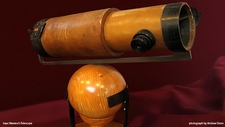History of Science

TEKS Objective
The student is expected to connect grade-level appropriate science concepts with the history of science, science careers, and contributions of scientists.
Essential Understanding
The student knows that information, critical thinking, scientific problem solving, and the contributions of scientists are used in making decisions.
Science Background
History of the Philosophy of Science: Explorable.com (website) - Historical summary of the evolution of scientific thinking and endeavor over the course human civilization, from ancient philosophy to the modern process of doing science.
Signature Lesson
Scientific Discoveries Timeline: timetoast.com (website) - Use the 21 events from 1543 to present to examine important discoveries. Have each student or teams of students research one of the events and share with the class.
Scientific Discoveries Timeline
timetoast.com
- Supporting Lessons
- Extensions
- Assessment Ideas
- Literature Connections
- Related
TEKS - Additional Resources
Supporting Lessons
In the News: How To Smile – In this activity, students learn about different scientists and write a news report about that scientist’s discovery. More details on the lesson can be found by clicking the green “Go To Activity” button and scrolling down to page 9.
Elaboration Lessons and Extensions
Thomas Edison Timeline: Crayola (website) – Imagine a world without the inventions of Thomas Edison. Students learn about his life, contributions and create a timeline.
Assessment Ideas
Challenge students find science discoveries that have occurred during their lifetime. Then, have them record these events in a timeline beginning at their birth date to the present.
Literature Connections
Arquimedes and the Door of Science, Bendick, Jeanne, ISBN-13: 978-1883937126
The Not-Quite World Famous Scientist, Hughes, Susan, ISBN-13: 978-1550416961
Book of Black Heroes: Scientists, Healers, and Inventors, Hudson, Wade, ISBN-13: 978-0940975972
Ext Women Scientists, Stille, Darlene, ISBN-13: 978-0516405858
Additional Resources
History of Physics: MIT (website) – Collection of links to different fields of physical sciences and famous experiments.
History of Physics
MIT, web.mit.edu
History of Chemistry: Le Moyne College (website) – Compilation of links to classic papers from the history of chemistry. Listed in alphabetical order and/or by topic.
TEKS Navigation
Grade 3
Need Assistance?
If you need help or have a question please use the links below to help resolve your problem.

Comments